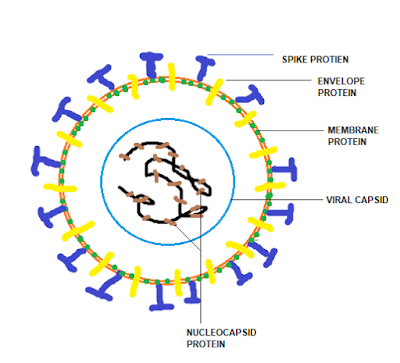STRUCTURE OF COVID-19

The SARS-CoV-2 virus or the COVID-19 virus is an enveloped virus (refer to my previous blog). It consists 4 main functional proteins – The S protein, The M protein, The E protein and the N protein. S – Spike protein E – Envelope protein M – Membrane protein N – Nucleocapsid protein Basic diagram of SARS-CoV-2 structure The S, E and M proteins are surface proteins, which mean that they can be found on the outer surface of the virus particle. On the other hand, the N protein is an inner protein that is found inside the viral capsid. S – proteins: The S proteins have two parts – the top crown part called as S1 and the bottom tail structure called S2. Its main function is to allow the virus to attach to the host’s cells. Every virus has its own unique S protein which attaches itself to its own compatible receptor which lies on the surface of the cell membrane in the organism's body. In the case of the SARS-Cov-2 virus, the S protein of the...

